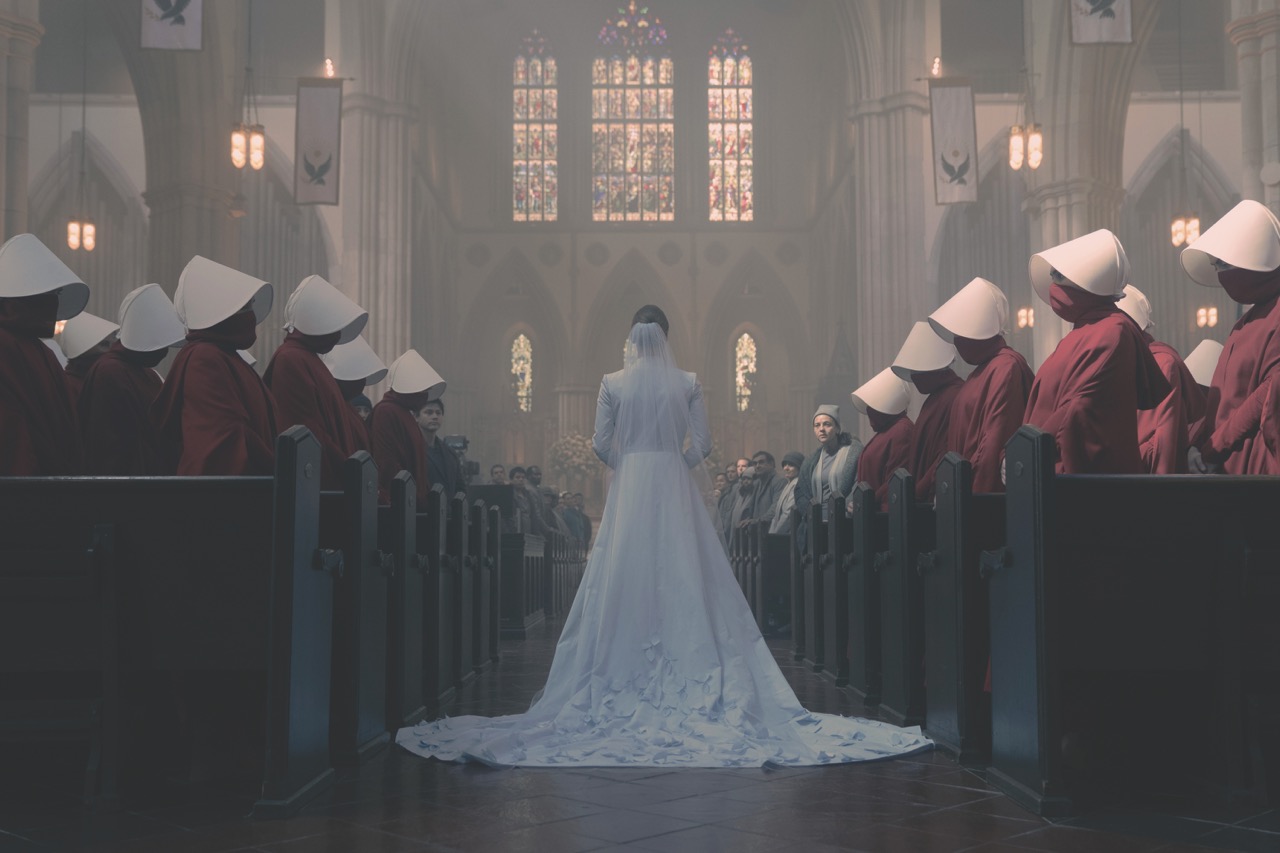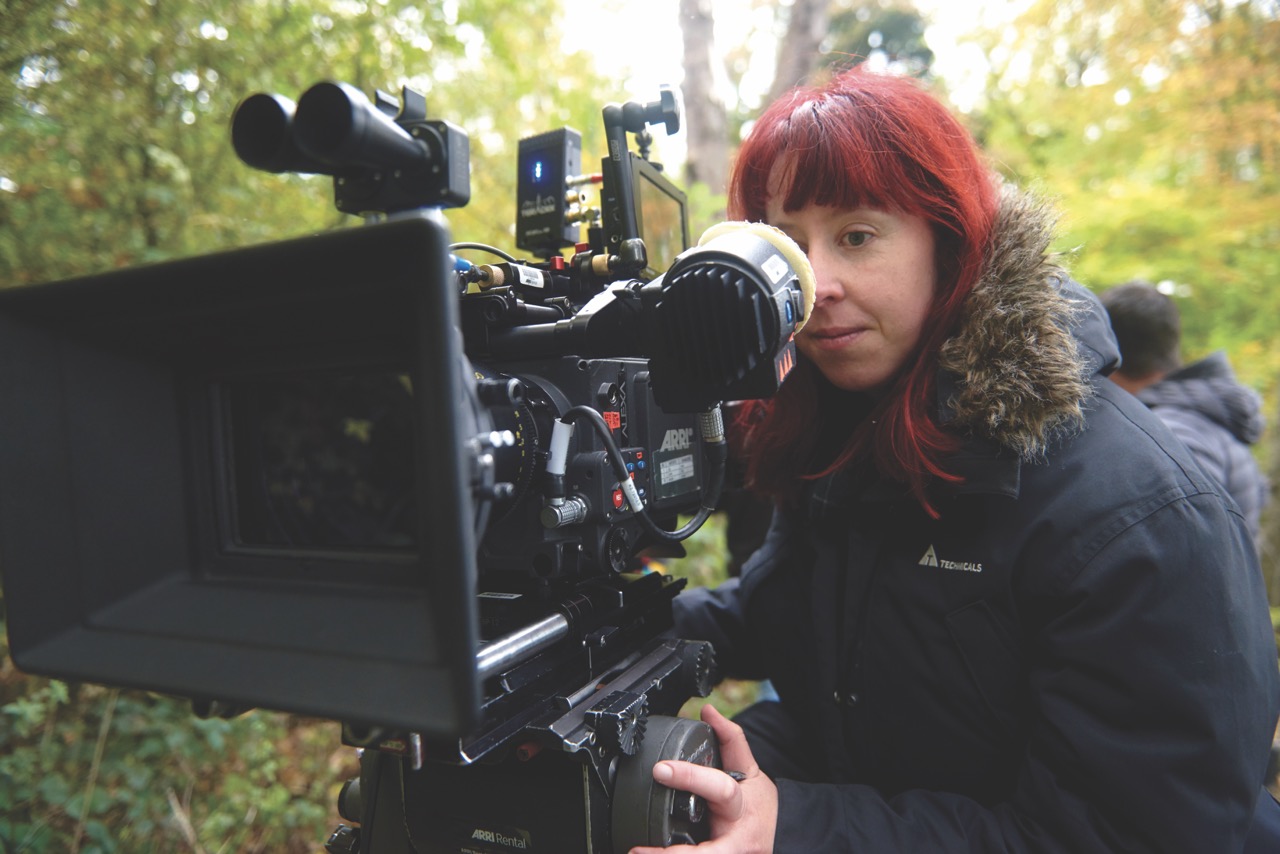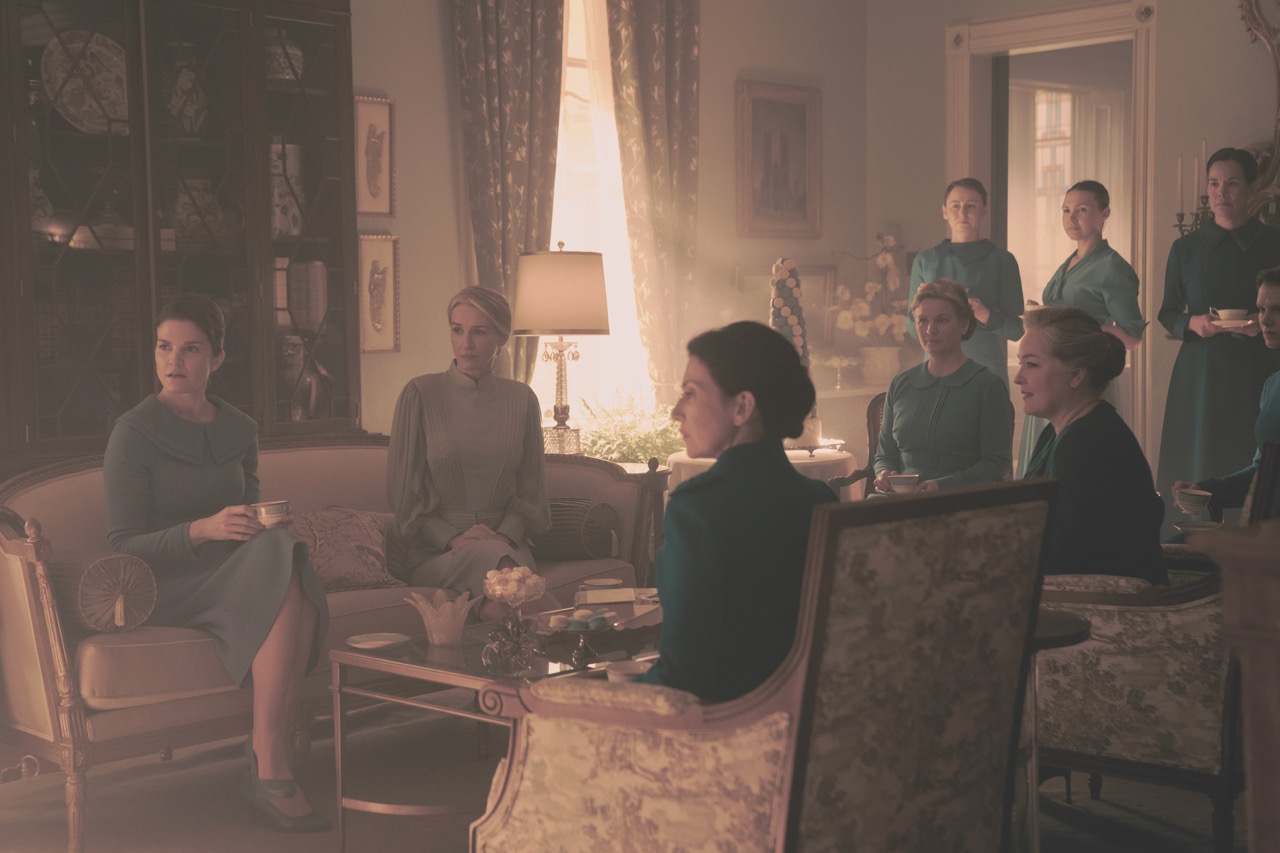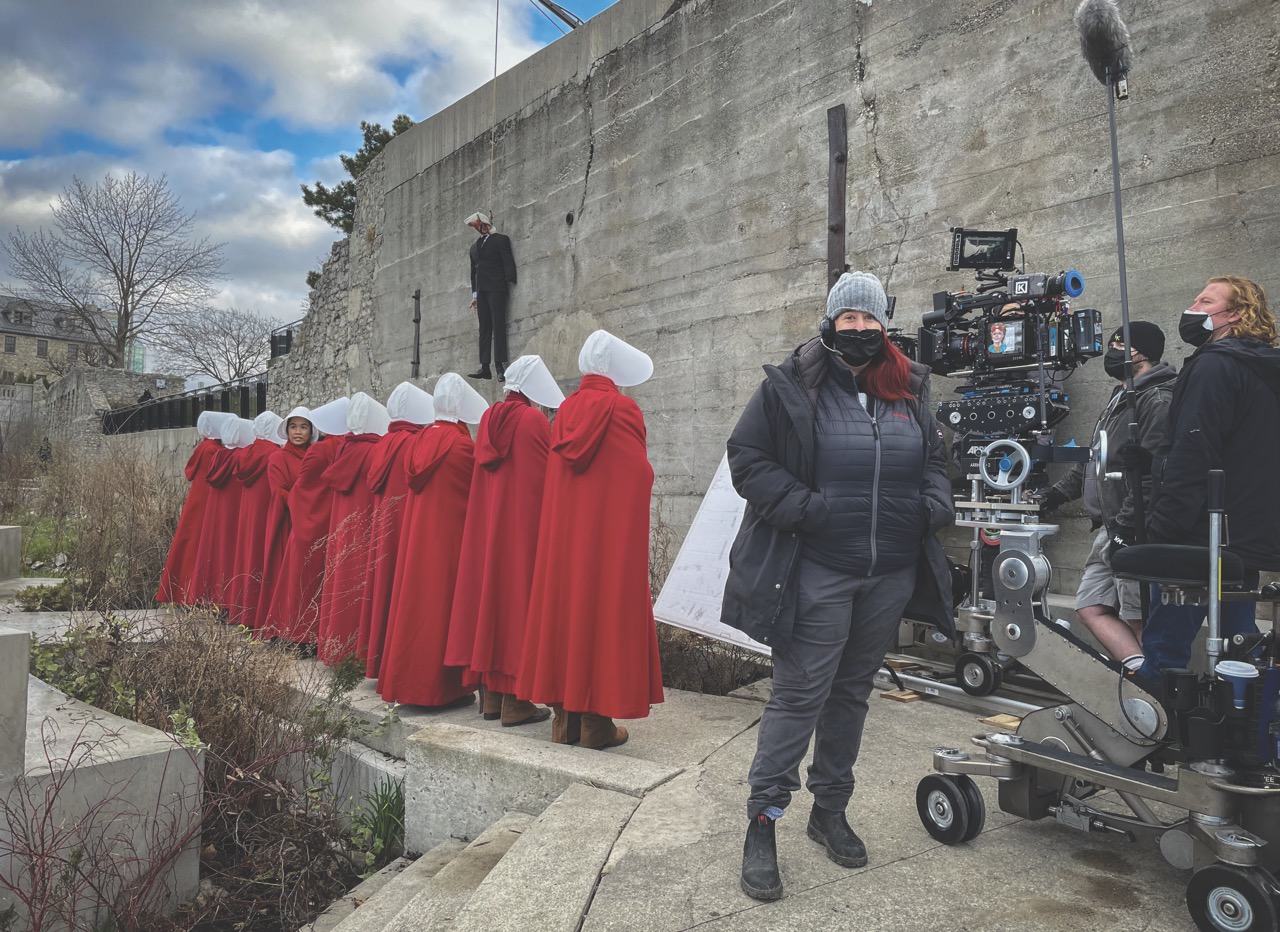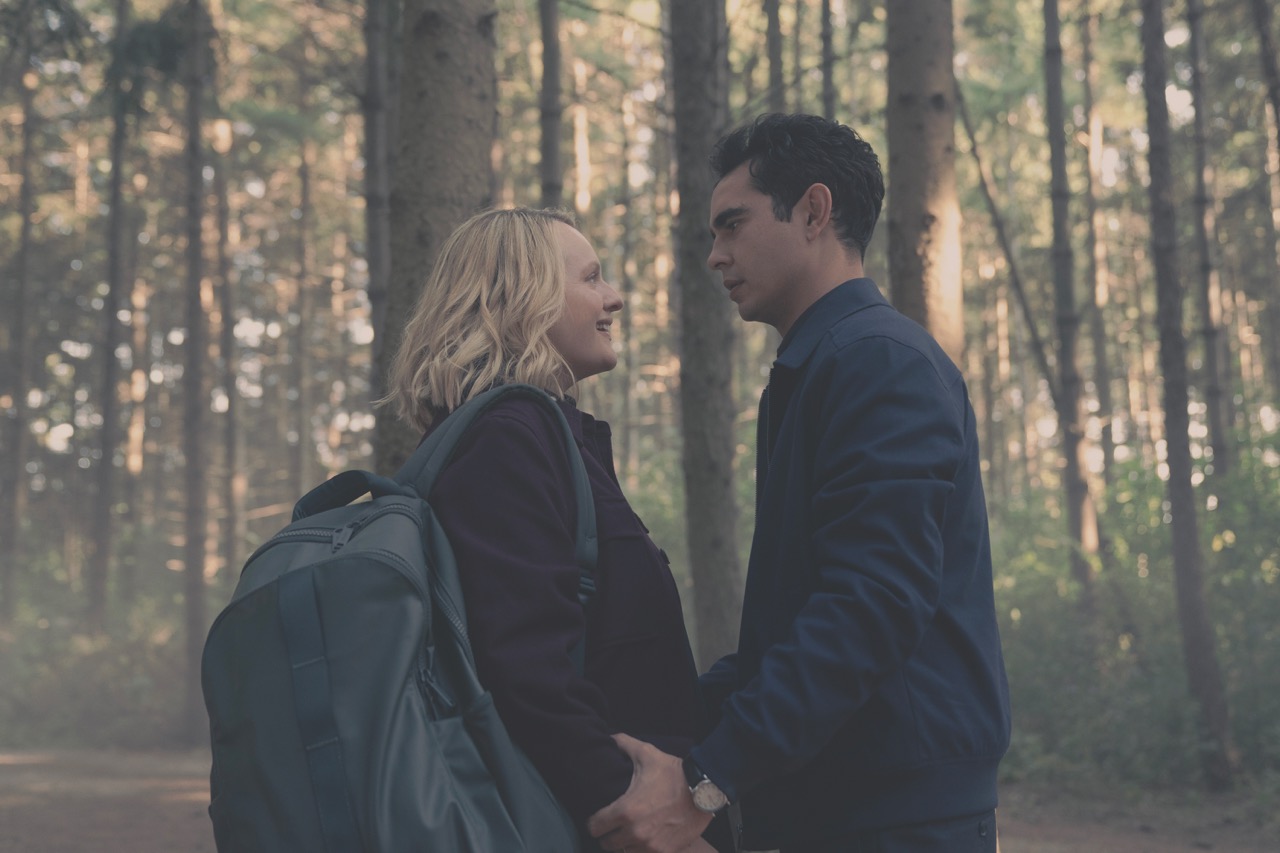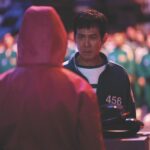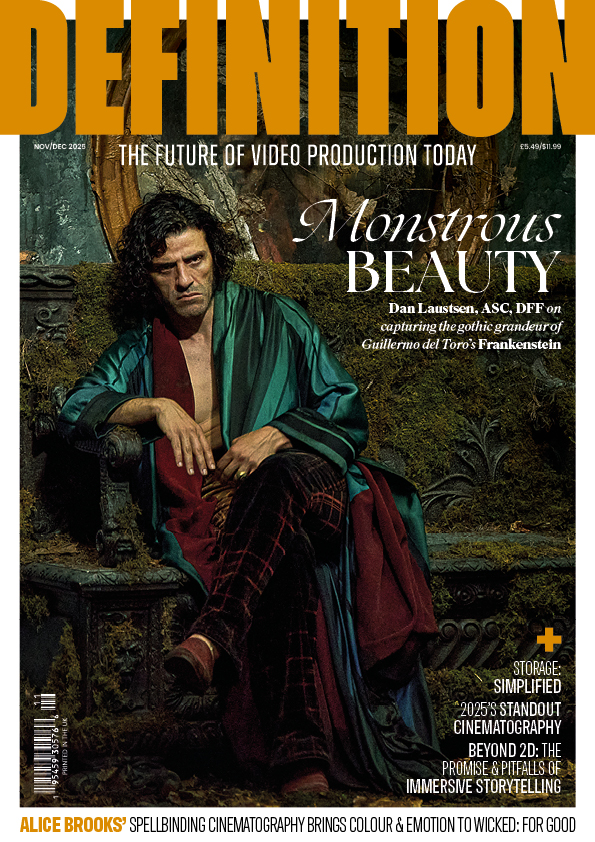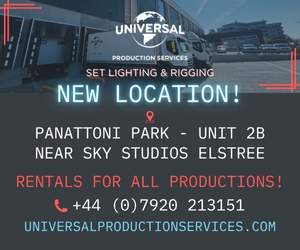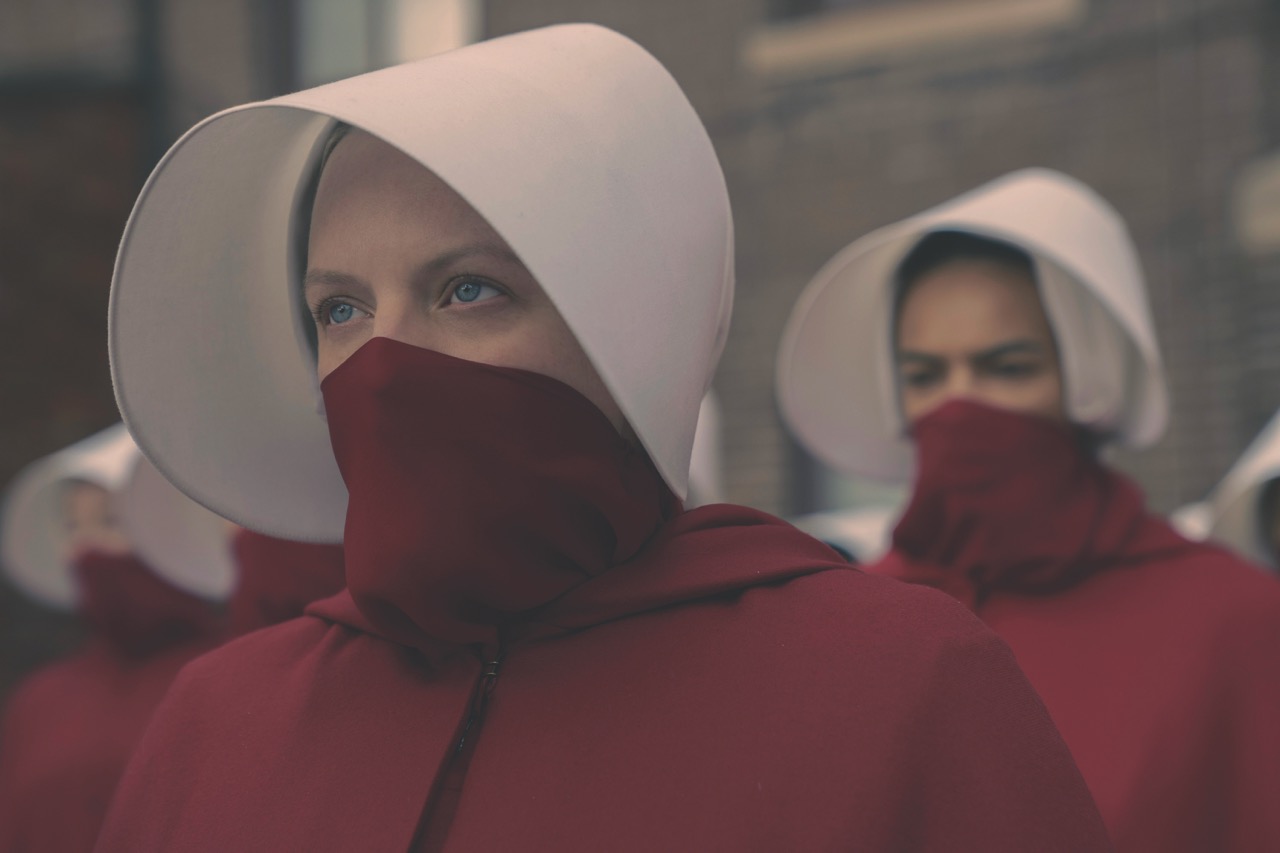
Production: The Handmaid’s Tale
Posted on Aug 19, 2025 by Admin
From Gilead, with love
After six seasons and nine years, The Handmaid’s Tale has finally wrapped. We catch up with the cinematographer, supervising sound editor and sound designer on this hit dystopian adaptation
Words Katie Kasperson | Images 2025 Disney. All rights reserved
Taken from Margaret Atwood’s 1985 dystopian novel of the same name, The Handmaid’s Tale follows June Osborne (Elisabeth Moss) and her fellow handmaids as they live under (and rebel against) the oppressive Republic of Gilead. In a world ravaged by environmental disaster and high rates of infertility, these handmaids are responsible for repopulation.
Debuting in 2017, the Hulu-produced series scored eight Emmy wins for its first season alone. As the series progressed, Moss – who’s highly decorated for her achievements in acting – stepped into the director’s seat, leading four of the final season’s ten episodes, including the opener, Train.
All aboard
Season 6 picks up right where 5 left off, with June bound for Alaska. Shot by Nicola Daley, who joined for the previous season, this first episode – though simple in its premise – received a hefty VFX treatment. “At the end of Season 5, we left Serena (a once-powerful figure in Gilead) and June, and we craned out of the train, then droned away,” Daley describes. “In episode 1, Lizzie and I said: ‘We have to start it like we ended it. We must find the train again and do the reverse of what we did before,’ which sounds easy, but it’s super hard to do a massive drone shot that blends in, VFX-wise.”
The scenes aboard the train were all filmed on Pixomondo’s LED volume. “It took a lot of work,” Daley adds. “We discussed what the height of the wall – and the distance from the train set to the wall – would be. We ended up with a carriage, vestibule and a bit of shoot-off.
“On Handmaid’s Tale,” Daley continues, “you shoot both really low and high; it’s not all at eye level. We did a lot in Unreal Engine, putting a digital camera in a digital set, then looking and going, ‘I can see off the wall there’. Pixomondo ended up building a tall LED wall in a horseshoe around the carriage.”
Working on a volume meant that Daley could benefit from image-based lighting. The episode “starts off with idyllic sunlight coming in and flares – and it’s all very beautiful. You get all those reflections shining in the metal or on the face,” Daley shares.
“As the scenes go on, things take a turn – Serena gets mobbed, and June gets her away from the mob – that unfolds at night. When June pulls the emergency brake, I wanted to flash all the lights and create chaos.”
To support this string of lighting cues, “we did a lot of testing,” Daley recalls. “We found moiré through the Plexiglass in the train set when on a steep angle. We decided if that happened on the set, we’d be able to see it straight away and then simply pop the window out.”
During the mob scene, Train to Busan served as the main inspiration. “Lizzie always described it as a zombie film, which I thought was brilliant,” describes Daley. “We didn’t have zombies, but we wanted the mob to be zombie-like.” The flashing lights and frame tilts heighten this feeling of terror even further. “You think they’re just on a nice little train ride, and then it all goes horribly wrong.”
The final challenge was to ‘work out how to do this crane shot’, according to Daley. “Once the wall is built, you can’t just move it. We had to move the set in the end; we had to shoot everything except the opening shot and then slide the set back to get the crane in.”
Despite some small hiccups, shooting on a volume was a no-brainer – and ultimately a decision that came down to the budget. “We had babies, a toddler, extras and some stunts. We would never have gotten that on a real train,” Daley claims. “It would have been too difficult to get everyone in and out.”
Finding a rhythm
Once Daley wrapped the train sequence, it landed on the desks of supervising sound editor David McCallum and sound designer Brennan Mercer. “We don’t overlap that much [with production],” begins McCallum. “While we didn’t work together, much of what Nicola had to do was reinforced by our sound work. With only one-and-a-half train cars, they had to make it seem like a much bigger and fuller space with a limited set.”
A train carriage is full of obvious sounds – the chugging and lurching as the train moves, the car doors opening and closing – as well as easily overlooked noises such as people speaking softly in the background. “You get this sense that, as the episode progresses, the train is making stops and picking up more people, and as the cars begin to fill up, personal space is being invaded and the tension is rising,” explains Mercer. “We used sound cues of babies and children crying, then the mechanical sounds and rhythmic clacking and squealing of brakes. We made sure that all jived with the music, received in advance.”
For Mercer, sound design is a window into subjectivity. “One of my big philosophies is that sound design for the sake of it is fun, but to make it feel grounded in reality, it should be attached to something that could actually occur. A big challenge was transitioning the audience through June’s headspace with the use of sound,” he admits.
While on her journey, June falls asleep, wakes up and realises her child is missing. “We wanted to transition between being tired, lulling to sleep, meeting her daughter in a dream and then coming out into anxiety,” Mercer recounts. “We use the clacking of the train, in rhythm with the score, to lull June to sleep. Once we come into this dream, we’re in this pastoral field, and we use cicadas and other kinds of crickets. As she begins to wake up, cicadas turn into this squealing rail of the train car, which lurches her into this anxiety,” he summarises. “All these things that happen practically – those sounds are the basis of the emotions she’s feeling.”
New territory
This juxtaposition between mankind and nature has always been at the centre of the show. “The cars in Gilead are all electric, there are birds in the trees,” highlights Mercer. “The oppressive regime and totalitarian surveillance are always in the background too.”
To design the series’ soundscape, McCallum first focused on Gilead, creating an almost inaudible radio static that follows the citizens like flies. “It’s supposed to make you feel like somebody is always listening,” he shares. “Over the course of the seasons, as the narrative has changed and moved beyond Gilead into Canada – and in this season in particular, into places like Alaska and the resistance camps – the nature of the sound has shifted as we’ve been telling a different story.”
Serena’s story in particular has arguably shifted the furthest. Once the wife of commander Fred Waterford and a conservative activist, she marries another man (going against the norms she helped establish) and ‘they have a big, Gilead wedding’, according to Daley. “We did two days of filming in a huge, cathedral-sized church, and everybody’s there – all the handmaids, the wives and the commanders. We had 500 extras, and then we digitally expanded the crowd with digi-doubles.
“It was a huge lighting hurdle – we had windows on one side and double windows at the top,” Daley continues. “We wanted all those shafts of light coming in – very Handmaid’s Tale.” Thanks to her background in documentary filmmaking, Daley had a strong sense of the sun’s position and was able to rely on natural light rather than introducing artificial sources. “When the sun was there, we shot that way so that we could get the shaft of light. When it went away or went behind the buildings, we turned around and shot the other way. It was military-precision organisation,” she recalls.
Daley also used drone shots during the wedding sequences, made possible by the church’s ‘huge, high ceilings’. “We did have a little problem with the drone. Serena has a beautiful, ice-blue wedding dress, and it had a long train. The drone couldn’t get too close to her because it blew the train of her dress up in the air; she looked like a superhero flying,” she laughs. “The drone had to do wide shots.”
Closing the curtain
Joining The Handmaid’s Tale towards the end of its run, Daley didn’t want to ‘reinvent the wheel’. “The Handmaid’s Tale has always been shot on the same camera, with the same lenses. They have certain rules about Gilead – that it looks a certain way – but that doesn’t mean you don’t have room to put your own stamp on it as a cinematographer.” For instance, she changed the filters used on June’s face and infused more energy into the camera movement; “Elisabeth, as a director, was interested in exploring that.”
While on the topic of Moss’ direction, McCallum adds: “She’s fairly active in the post-sound process, and she loves it. It can be a stressful show to work on; it’s bleak, so you don’t often come out of your day feeling happy at the end of it, but Lizzie comes in with this bountiful energy and love of sound,” he states. “That enthusiasm from her is a lot of fun.”
McCallum and Mercer have been with The Handmaid’s Tale since day one, so bringing it to a close was bittersweet. “There’s a moment in episode 10 where the handmaids are reunited, and they get together via a fantasy of June’s. It’s emotional to see these women together. They’re singing karaoke. It’s a beautiful scene,” he shares. “That was special.”
The series ends in much the same way it began: the story coming full circle. “Lizzie planned this from the beginning,” says McCallum. “The last scene in the final episode required me to go back to work I’d done in the very first episode. It involved reusing voiceover and ADR recorded in 2016. I’d never done anything like that before, and was so excited to do it. I spent days making it work perfectly.”
Since the start, The Handmaid’s Tale has been a collective effort, with the crew open to ideas from the cast and vice versa. “We’re lucky that our team is conscientious about the impact sound can have,” admits Mercer. “It doesn’t matter where a good idea comes from; they’re respectful of everyone on the team, no matter the level. It’s a beautiful thing to have been part of for the last nine years – people open to sound as a craft and not just a technical necessity.”
According to Daley, the final season was made mainly with audiences in mind. “Moss always said she wanted to give this season to the fans; they’ve been there for nine years. I thought that was a nice sentiment, that they wanted to do the whole season as an ode to the rest of the series – to do it justice,” she shares. “It’s a special one.”
The Handmaid’s Tale is streaming on Channel 4 (UK) and Hulu (US)
This story appears in the July/August 2025 issue of Definition


